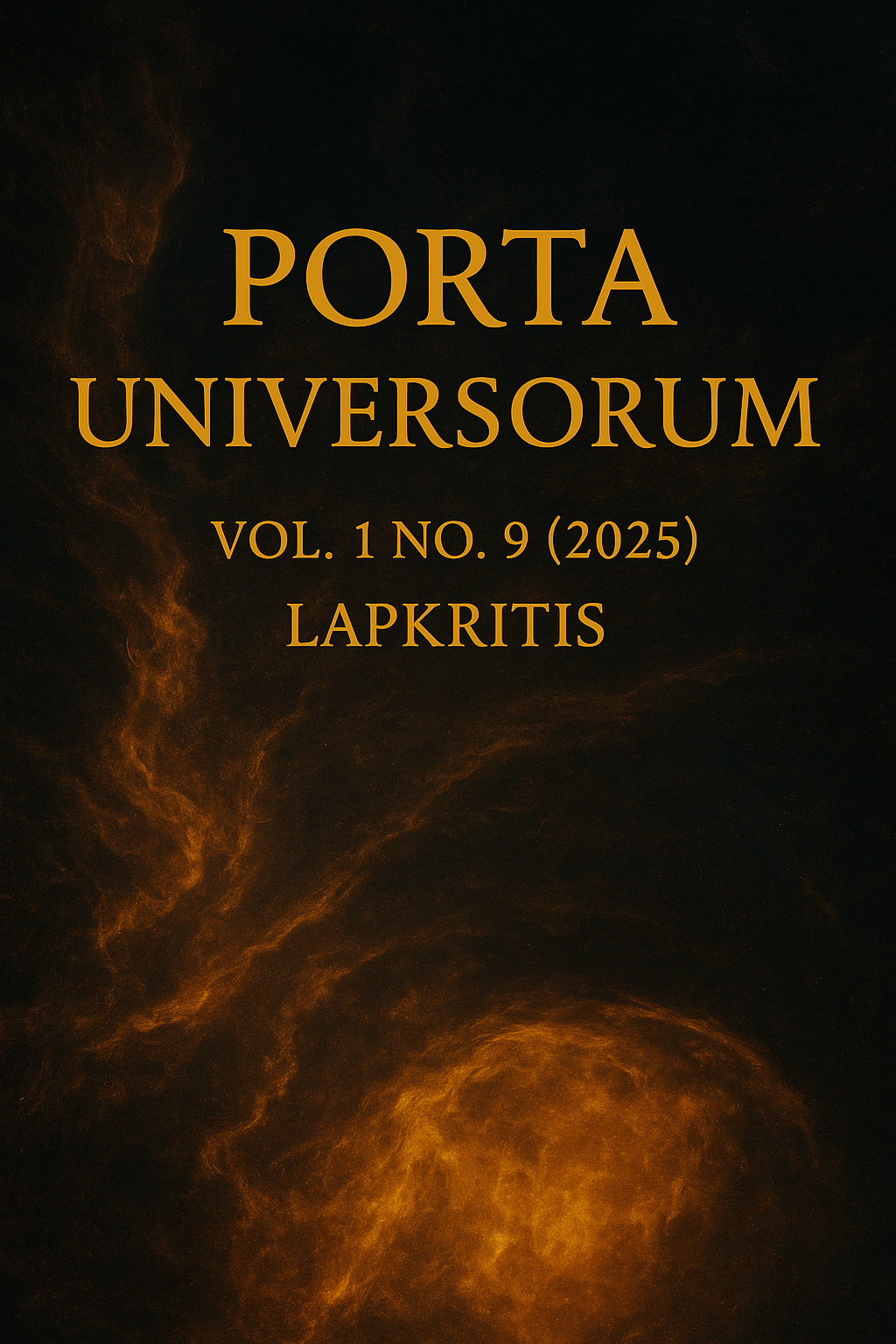Dialogue Between Digital and Traditional Art
##semicolon##
https://doi.org/10.69760/portuni.0109005##semicolon##
Digital art##common.commaListSeparator## Traditional art##common.commaListSeparator## Hybrid media##common.commaListSeparator## Materiality##common.commaListSeparator## Authenticity##common.commaListSeparator## Post-digital aestheticsSantrauka
This paper examines the evolving relationship between digital and traditional art, exploring how both forms engage in a dynamic dialogue that reshapes contemporary artistic practice. Through qualitative analysis of literature, artist case studies, and visual comparisons, the study identifies key intersections in technique, materiality, and audience engagement. Findings reveal that digital and traditional media increasingly coexist within hybrid artistic processes, challenging conventional notions of authenticity, authorship, and material presence. While traditional art maintains its tactile and historical depth, digital art introduces new modes of interactivity, accessibility, and sensory experience. Together, they contribute to a broader redefinition of artistic expression in the post-digital age. The study concludes that the convergence of digital and traditional art reflects a cultural and philosophical synthesis, affirming art’s capacity to adapt, integrate, and innovate across evolving technological landscapes.
##submission.citations##
Anadol, R. (2019). Machine Hallucinations [Digital installation]. Refik Anadol Studio.
Babayev, J. (2022). Online versus offline learning. ZNANSTVENA MISEL Учредители: Global Science Center LP,(66), 24-25.
Benjamin, W. (1936). The Work of Art in the Age of Mechanical Reproduction. Schocken Books.
Bishop, C. (2012). Artificial Hells: Participatory Art and the Politics of Spectatorship. Verso.
Bourriaud, N. (2002). Relational Aesthetics. Les Presses du Réel.
Cotter, H. (2021, May 12). Art in the Age of Instagram. The New York Times.
Grau, O. (2020). Virtual Art: From Illusion to Immersion. MIT Press.
Hansen, M. B. N. (2004). New Philosophy for New Media. MIT Press.
Javid, B., & Sadikhova, S. (2025, May). Culturonyms in Food and Drink: How Language Reflects Cultural Identity Through Cuisine. In Publisher. agency: Proceedings of the 10th International Scientific Conference «Modern scientific technology»(May 29-30, 2025). Stockholm, Sweden (p. 346).
Krauss, R. (1999). A Voyage on the North Sea: Art in the Age of the Post-Medium Condition. Thames & Hudson.
Lessig, L. (2008). Remix: Making Art and Commerce Thrive in the Hybrid Economy. Penguin Press.
Livingstone, M. (2017). David Hockney. Thames & Hudson.
Manovich, L. (2001). The Language of New Media. MIT Press.
McAuley, A. (2021). Beeple and the Economics of Digital Art. Artforum International, 59(7), 42–47.
Merleau-Ponty, M. (1962). Phenomenology of Perception. Routledge.
Paul, C. (2016). Digital Art (3rd ed.). Thames & Hudson.
Sadikhova, S., & Babayev, J. (2025). Challenges Encountered in Translation of Culture-bound and Subject-specific Terminology While Using Google Translate. EuroGlobal Journal of Linguistics and Language Education, 2(3), 119-126.
Sadikhova, S., & Babayev, J. (2025). Linguistic Analysis of Art Terms in English. Porta Universorum, 1(3), 214-223.
Sadikhova, S. (2025). XIX Century World Fine Arts: From Classicism to Modernism. Porta Universorum, 1(8), 106-115.
Sadikhova, S. (2024). Contrasting Splendor: A Comparative Study of Baroque and Classical Styles in Visual Arts. Acta Globalis Humanitatis et Linguarum, 1(2), 144-154.
Velthuis, O. (2022). NFTs and the New Art Economy. Journal of Cultural Economics, 46(3), 417–431.
##submission.downloads##
Publikuota
Numeris
Skyrius
##submission.license##
##submission.copyrightStatement##
##submission.license.cc.by-nc4.footer##License Terms
All articles published in Porta Universorum are licensed under the Creative Commons Attribution–NonCommercial 4.0 International License (CC BY-NC 4.0). This license permits:
-
Sharing (copying and redistributing the material in any medium or format),
-
Adapting (remixing, transforming, and building upon the material),
-
for non-commercial purposes only,
-
with proper attribution to the original author(s) and source.
Commercial use of the material is not permitted without prior written permission from the publisher.




